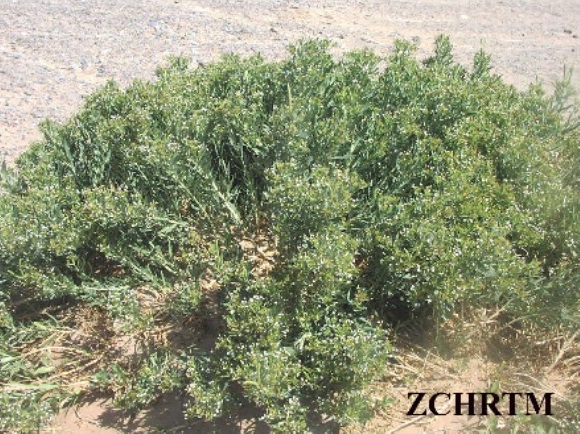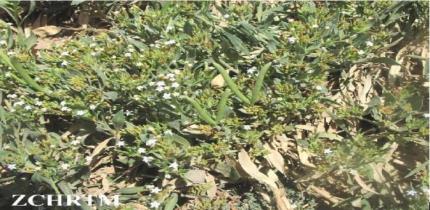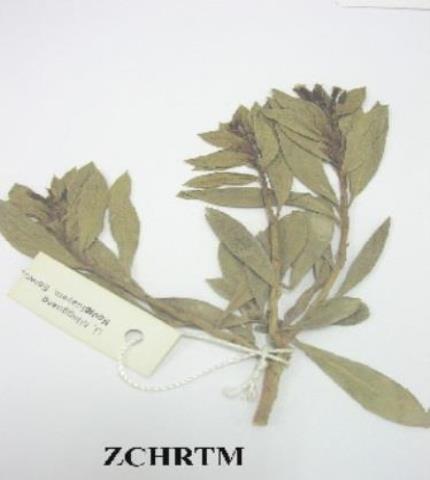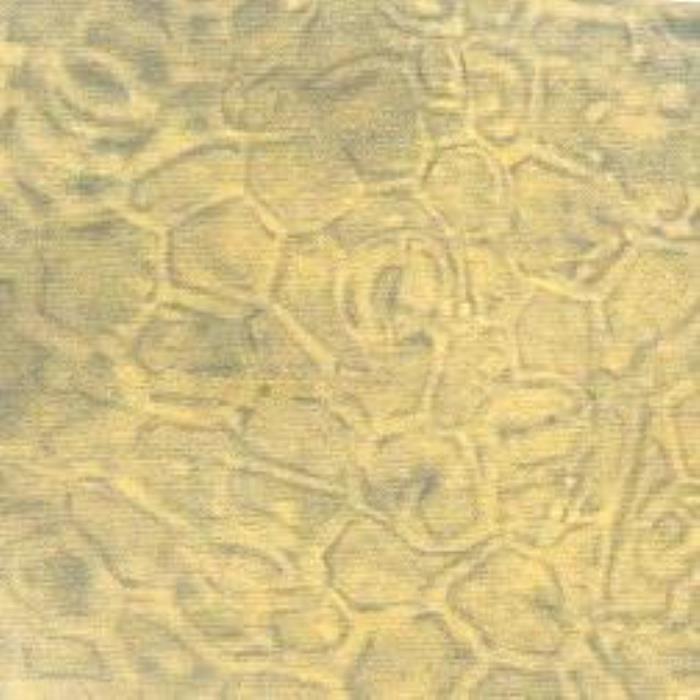
Rhazya stricta / الحرمل
Harmal, Adfir
Senhwar, Sahaer, Dogbane
Harmal
Apocynaceae

Flowers

Fruits

Herbarium Sample
Ethnobotanical Characteristics
Description
Glabrous shrub, often woody- based, 30-80 cm tall, the dense semi-erect branches to 1m, glabrous. Leaves alternate, very variable, sub succulent, elliptic to narrowly ovate, 5-10 cm long x 1-2 cm across, tip acute, margin entire, base unequally attenuate, sub sessile, yellowish green when dry, glabrous. Flowers arranged in shortly pedunculate axillary terminal corymbs, pedicels 2-3 mm. Calyx with 5 narrowly triangular lobes, 2 mm long. Corolla tube, greenish yellow, 8-14 mm long; lobes 5, outside bluish green, inside white, more or less round, acuminate, 3-6 mm across. Fruits paired follicles, erect, parallel, semi cylindrical, 5-8 cm long x 0.5 cm across, tip attenuate, smooth, terete, yellowish green. Seeds compressed, 6-8 mm long, narrowly winged, brown. Leaves and long thin pods turn brown and brittle.
Habitat & Distribution
Throughout tropical regions all over the world. In UAE in alluvial plains , sandy areas and wadis ,and dominant in heavily grazed areas because it is not palatable to livestock, sometimes forming pure stands.
Part(s) used
Leaves flowers, seeds.
Traditional & Medicinal Uses
Chief medicinal plant of the most desert areas in Arabian Peninsula. Dry plant more effective than fresh one, leaves bitter. The plant is a general tonic, digestive, anti-inflammatory and anti-microbial, stimulant, anticancer, and pain killer. In UAE the plant known to be purgative, anthelmintic, it is used much to treat: fever, allergy, diabetic, dysentery, stomach problems; and inhaled to treat headache and asthma. In other countries used to treat rheumatism, skin problems, where leaf infusion used for pharyngitis, syphilis and body weakness. The plant considered as a good renitent to make cheese.
Pharmacognosy and Phytochemistry
Parts Studied
Leaves
Microscopical Description
Leaf: A transverse section of the leaf shows its unilateral characteristic. The epidermal cells are ovoid to rounded with thin cell walls and they are covered with a very thick cuticle having faint striations and it is somewhat raised forming small curves. The palisade tissues consist of one layer of rectangular and slightly broad loosely packed cells with thin wavy cell walls. The spongy tissues consist of rounded to oblong loosely packed cells that contain many small whitish prisms or light green rounded particles. They also embed vascular tissues that include spirally thickened vessels. The lower epidermis consists of oblong to rounded cells that have covering trichomes with thick warty cell walls found mainly near to the margins. They also bear glandular trichomes with large spherical heads and thick curved stalks. Stomata are oval in shape and anomocytic and they are abundant on both epidermises (DPS, ZCHRTM unpublished results).

a) T S of leaf

b) Upper epidermis

c) Lower epidermis
- (a). TS of the leaf showing a papillose epidermis covered with a thick raised cuticle forming small curves. The underlying palisade layer consists of rectangular slightly broad cells underlain by spongy tissues.
- (b). A surface view of the leaf upper epidermis showing polygonal cells with oval anomocytic stomata.
- (c). A surface view of the leaf lower epidermis showing polygonal cells with warty cell walls; stomata are oval, anomocytic and abundant. (Magnifications: All x 400).
Organoleptic characteristics
Appearance: Powder
Colour: Greenish yellow
Odour: Odourless
Taste: Bitter
Physicochemical constants
Loss in weight on drying at 105°C (%): 7.40
Solubilities (%)
Alcohol solubility: 20.00
Water solubility: 37.60
10% ethanolic extractive: 47.00
Ash values (%)
Total ash: 7.80
Water soluble ash: 4.20
Acid-insoluble ash: 0.30
Successive extractive (%)
Petroleum ether (60-80C): 8.00-8.80
Chloroform: 12.11-13.30
Absolute alcohol: 19.80-20.20
Distilled water: 18.60-19.30
pH values
pH of 1% solution: 5.13
pH of 10% solution: 4.86
The above results are under process of publication (DPS, ZCHRTM un published results).
Chemical constituents
Many indole alkaloids have been reported of which vallesiachotamine, sewarine and tetrahydro secamine, show cytototoxic activities. (Kamil et.al 2000; DPS, ZCHRTM un published results; Shahina 1994).
Pharmacological and Toxicological studies
The alkaloid fraction of the Rhazya stricta used to assess the microsomal activity of cytochrome P 450. These results suggest that Rhazya has the potential to interact with other drugs that are biotransformed by cytochrome P450, when given concomitantly with it. (El-Kadi et. al., 2003).
The toxic effects of oral administration of 0.25 g/kg Rhazya stricta leaves on Najdi sheep were investigated for 42 days was not fatal to sheep while single oral doses of either N. oleander leaves or the mixture with R. stricta leaves proved fatal to animals within 24 hours with toxic symptoms (Adam, 2002).
Rhazya stricta has been shown to have an antioxidant action in rats. The study suggested that the water extract may contain compounds that could potentially ameliorate gentamycin nephrotoxicity in rats (Ali, 2002).
The effect of Rhazya stricta leaves and Nigella sativa seeds observed are found to be associated with macrocytic hypochronic anaemia and alterations in serum aspartate transaminase (AST) and alanine transaminase (ALT) activities and concentrations of total protein, albumin, globulin, cholesterol, calcium and other serum constituents (Al-Homidan et. al., 2002). The leaf showed antioxidant actions in the rat (Ali et. al., 2000). The plant has been reported to have low toxicity (Ali et. al., 2000).
The plant extract has been reported to be associated with increases in serum AST and (LDH), in elevated bilirubin and urea concentrations, and decreased total protein, albumin and calcium concentrations, and leucopenia and anemia (Adam et. al., 1998). The plant extract or component(s) might possess an antidepressant-like effect (Ali et. al., l998). It is reported that the simultaneous treatment of normal and diabetic rats with the plant extract (0.5, 2.0 and 5.0 g /kg) and glybenclamide (5.0 mg/ kg) significantly exacerbated the effects on glucose, insulin and glucagon induced by the extract or by glybenclamide when given separately showing the possibility of adverse effect (Ali et. al., l997).
It showed as a source of antispasmodic agent (Tanira et. al., l996). Lyophilized extract and a daily administration of R. stricta to rats for 5 days failed to produce any signs of organ damage (Wasifi et. al., l994).
The pharmacological and toxicological studies carried out in ZCHRTM laboratory and the results in brief, on Rhazaya stricta (10% ethanolic extract) have been given below. The results presented without references showed unpublished data (unpublished data, ZCHRTM, DBMS):
|
ACTIVITY |
RESULTS |
|
Anti-inflammatory activity-Rat paw oedema |
Showed a significant anti-inflammatory activity. |
|
Anti-inflammatory activity-Cotton pellet |
Showed a significant anti-inflammatory activity. |
|
Anti-inflammatory activity-Topical |
Showed a significant anti-inflammatory activity. |
|
Antinociceptive activity-Hot plate method |
Showed a significant antinociceptive activity. |
|
Antinociceptive activity-Tail flick |
No significant effects recorded using tail flick method. |
|
Antinociceptive activity-Writhing |
Significant antinociceptive activity using writhing method. |
|
Studies on gastric ulcers- Indomethacin induced |
Produced gastroprotective effect (Islam et. al., 1999). |
|
Studies on gastric ulcers- Phenylbutazone induced |
Produced gastroprotective effect (Islam et. al., 1999). |
|
Studies on gastric ulcers-NaOH induced |
Produced gastroprotective effect (Islam et. al., 1999). |
|
Studies on gastric ulcers-Ethanol induced |
Produced gastroprotective effect (Islam et. al., 1999). |
|
Studies on gastric ulcers-Cold stress |
Produced gastroprotective effect (Islam et. al., 1999). |
|
Anti-diabetic activity-GTT |
Showed mild antidiabetic activity (Radha et al., 2000). |
|
Anti-diabetic-STZ |
Showed lowering effect (Radha et al., 2000). |
|
Anti-hypertension activity- Anesthetic rats |
Mild reduction of BP & HR observed |
|
Locomotor activity |
Six weeks treatment did not change the locomotor activity. |
|
Gross behavioral studies- Tremor/Twitches |
Administered orally, produced no toxic effect; Overt signs and symptoms recorded on i.p administration, mortality recorded (Islam et al., 2000). |
|
Gross behavioral studies -Writhing (Oral) |
No overt signs and symptoms(Islam et al., 2000). |
|
Gross behavioral studies - Diarrhea, Urination (Oral) |
No overt signs and symptoms (Islam et al., 2000). |
|
Mortality |
Administered orally produced no mortality Islam et al., 2000). |
|
Motor co-ordination (String & Platform test) |
Motor co-ordination not affected Islam et al., 2000). |
|
Acute toxicity studies |
Administered orally produced no toxicity at the dose tested (Islam et al., 2000). |
|
LD50 evaluation |
>6.4 g/kg. (Islam et al., 2000). |
|
Sub-chronic toxicity studies. |
Vital organ study showed that ovary weight was increased (Islam et al., 2000). |
|
Haematological studies. |
No significant alteration noticed (Islam et al., 2000). |
|
Biochemical studies. |
Significant changes in some parameters including CPK, GT and Mg decreased and Ca increased (Islam et al., 2000). |
|
Teratogenicity |
Not teratogenic effect; No Foetotoxicity & no maternal toxicity observed (Islam et al., 2000). |
|
Mutagenicity |
Not mutagenicity (Clastogenic activity) reported (Islam et al., 2000). |
Summary of the results
The plant showed significant anti-inflammatory, analgesic activity, antigastric ulcer activity. It also showed mild anti-hypertension activity. The plant also showed a mild antidiabetic activity. The safety evaluation studies showed that acute administration of the extract did not show any overt signs and symptoms. However, chronic administration of the extract altered some biochemical and haematological parameters. No mutagenic activity was recorded as confirmed with the micronuclei test. The extract produced no teratogenic effects administered orally.
References
- Adam SE., (1998) Toxicity of Rhazya stricta to sheep. Vet Hum Toxicol. 40(2): 68-9. Alami, R. & Macksad, A. Medicinal Plants of Kuwait. Al-assriya Printing Press. Kuwait.
- Alami, R. & Macksad, A. Medicinal Plants of Kuwait. Al-assriya Printing Press. Kuwait.
- Al-Homidan A, Al-Qarawi AA, Al-Waily SA, Adam SE., (2002) Response of broiler chicks to dietary Rhazya stricta and Nigella sativa. Br Poult Sci. 43(2): 291-6.
- Ali BH., (2002) The effect of treatment with the medicinal plant Rhazya stricta decne on gentamicin nephrotoxicity in rats. Phytomedicine. 9(5): 385- 9.
- Ali BH., (1997) The effect on plasma glucose, insulin and glucagon levels of treatment of diabetic rats with the medicinal plant Rhazya stricta and with glibenclamide, alone and in combination. J Pharm Pharmacol. 49(10): 1003- 7.
- Ali BH, Alqarawi AA, Bashir AK, Tanira MO. (2000) Antioxidant action of extract of the traditional medicinal plant Rhazya stricta Decne. in rats. Phytother Res. 14(6): 469-71.
- Ali BH, Al-Qarawi AA, Bashir AK, Tanira MO. li BH, Al-Qarawi AA, Bashir AK, Tanira MO. (2000) Phytochemistry, pharmacology and toxicity of Rhazya stricta decne: a review. Phytother Res. 14(4): 229-34.
- Ali BH, Bashir AK, Tanira MO, (1998) The effect of Rhazya stricta Decne, a traditional medicinal plant, on the forced swimming test in rats. Pharmacol Biochem Behav. 59(2): 547-50.
- Atta-ur-Rahman, Qureshi, M.M.,Zaman, K., Malik, S. & Ali S.S (1998). The alkaloids of Rhazya stricta and R. Orientalis. Fitoterapia V. LX, No. 4.
- Department of Biomedical Sciences, Zayed Complex for Herbal Research and Traditional Medicine, Unpublished results.
- Department of Pharmacognostic Sciences, Zayed Complex for Herbal Research and Traditional Medicine (ZCHRTM), unpublished results.
- El-Ghonemy, A. A. Encyclopedia of Medicinal Plants of the United Emirates. (1993) 1st Edition, University of UAE.
- El-Kadi AO, Tanira MO, Ali BH, Bashir AK, Souich PD. (2003) The effect of a strongly basic alkaloidal fraction of Rhazya stricta, a traditional medicinal plant, on cytochrome P450-mediated metabolism of theophylline in mice. Phytother Res. 17(6): 688-90.
- Ghazanfar S A. Handbook of Arabian Medicinal Plants. p.26, CRC Press,1994.
- Ghazanfar, S. A. Handbook of Arabian Medicinal Plants.(1994) Library of Congress.
- Islam, M.W., M.N.M. Zakaria, R. Radhakrishnan, A. Ismail, X.M. Liu, M. Habibullah and K. Chan. Anti-inflammatory, gastric anti-ulcer and cytoprotective properties of ethanolic extract of Rhazya stricta Decene. (Fam. Apocynacea). “2000 Years of Natural Products Research – Past Present and Future”, Amsterdam, July 26-30 1999.
- Jongbloed M. V. The Comprehensive Guide to the Wild Flowers of the united Arab Emirates, Erwda. (2003) Emirates Printing Press, Dubai, UAE. ISBN 9948-408-24-1.
- Kamil M , Ahmad F, Sheikh M O, Jayarag AF, Gunaskhar C, Thomas S, Habibullah M, Chan K & Attas A. Quality Control Studies for the plant Rhazya stricta. European Journal of Pharmaceutical Sciences, Vol. II. Supp.1, Elsevier, Sept. 2000.
- Kotb, T. F. Medicinal Plants in Libya.(1985) Arab Encyclopedia House. Tripoli-Libya.
- Mandaville, J. P. Flora of Eastern Saudi Arabia. (1990) Kegan Paul International Ltd. England.
- Miller A.G., Morris M. Plants of Dhofar, The southern Region of Oman: Traditional, Economic and Medicinal Uses.(1987) Office of the Advisor for conservation of the Environment, Sultanate of Oman.
- Quality Control Studies for the plant Rhazya stricta., EUFEPS 2000 Congress, Budapest (Hungary) , Po-154, Sept. 2000.
- R. Radhakrishnan, M.N.M. Zakaria, M.W. Islam, X.M. Liu, K. Chan and Al-Attas. Anti-Hyperglycaemic Effects of Rhazya stricta in Diabetic Mice. 1st International Congress on Traditional Medicine & Materia Medica, Tehran 2000.
- Tanira, M.O., Ali, B. H., Bashir, A.K;, Wasfi, I.A& Chandranath, I. (1996). Evaluation of the relaxant activity of some United Arab Emirates plants on intestinal smooth muscle. J. Pharm Pharmacol. 48(5) 545-550.
- Riad Alami & AS`Ad Macksad, Medicinal Plants of Kuwait ( without date).
- Wasfi IA, Bashir AK, Amiri MH, Abdalla AA. (1994) The effect of Rhazya stricta on glucose homeostasis in normal and streptozotocin diabetic rats. J Ethnopharmacol. 8; 43(2): 141-7.
- Western, A. R. The Flora of United Arab Emirates, an introduction. (1986) Publication of the UAE University.
